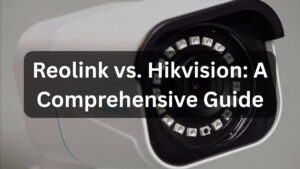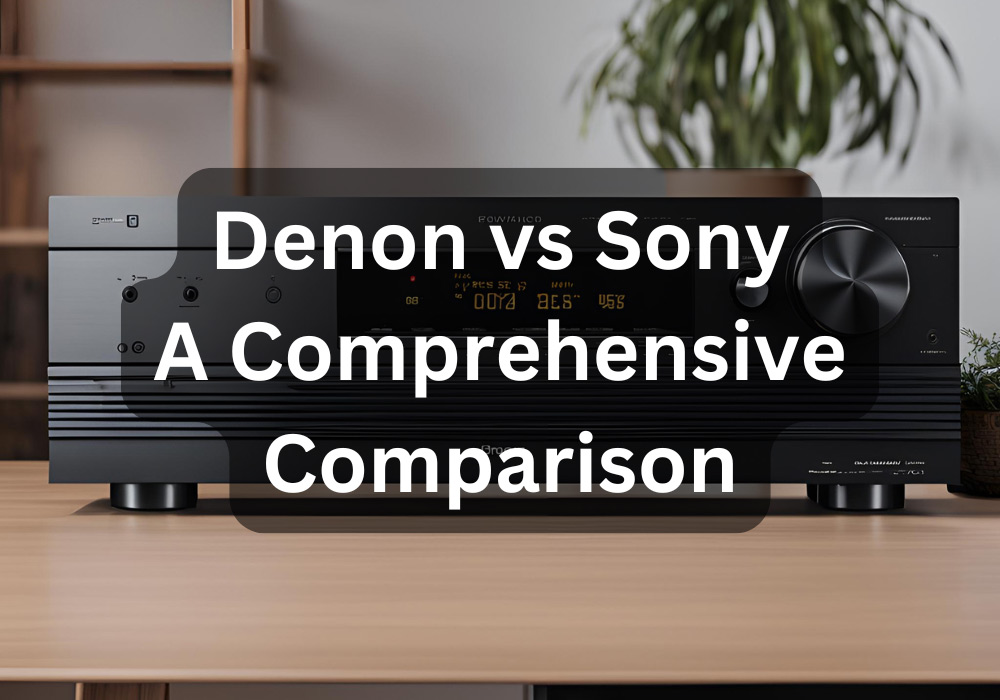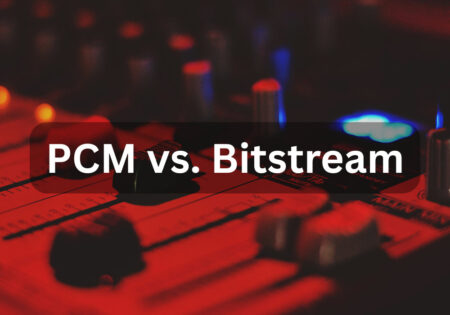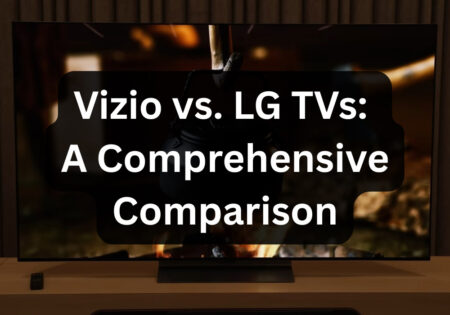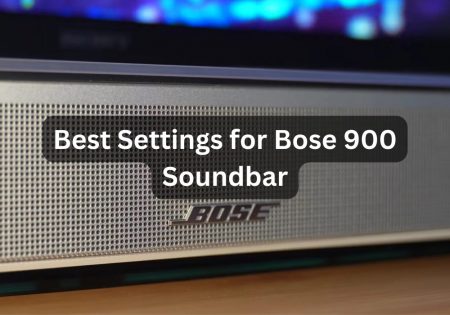Comparing Denon vs. Sony head-to-head helps you decide which brand’s products best match your needs and budget. In this article, I’ll compare the top AV receivers from Denon and Sony in every price range. I’ll dive deep into the details and compare them in terms of audio and video performance, connectivity, and features.
Which is Better, Denon or Sony? (Quick Answer)
According to my tests, Denon receivers provide better value for money in every price range. Here’s why:
- In the budget receiver category: You can buy a Denon AVR-S760H. Although Sony’s STR-DH790 offers slightly better sound, Denon’s receiver provides superior video performance (4K/120Hz & 8K/60Hz), better connectivity (built-in Wi-Fi, more HDMI inputs, and AirPlay 2 support), and finer calibration and voice control features. (Jump to Comparison)
- In the moderately-priced receiver category: While both models in this price range have their own characteristics in terms of audio quality—the Denon AVR-X2800H offers a more balanced sound with clear highs, while the Sony STR-AN1000 has a punchier sound—I believe Denon’s receiver is better overall due to its upscaling and Audyssey calibration features. (Jump to Comparison)
- In the premium receiver category: Both models (Denon AVR-X4800H and Sony STR-AZ5000ES) are robust receivers. There is no clear winner or loser here; however, Denon’s support for Dirac Live gives it a slight edge. (Jump to Comparison)
Also Read:
Denon vs Marantz
Also Read:
Denon vs Onkyo
Additionally, in the table below, you can view and compare the specs of the models discussed in this article at a glance:
| Price Class | Model | Audio Performance | Video Performance | Connectivity | Features & Functionality |
|---|---|---|---|---|---|
| The Budget Class | Denon AVR-S760H | Audyssey MultEQ calibration, 75W per channel (8 ohms), good SNR of 98 dB | 4K/60Hz, 4K/120Hz, 8K/60Hz, HDR10, HDR10+, Dolby Vision, HLG | 6 HDMI inputs (3 support 8K), 2 optical inputs, phono input, HEOS app | Multi-room with HEOS, Alexa/Google/Siri voice control, intuitive UI |
| Sony STR-DH780 | DCAC calibration, 90W per channel (6 ohms), good SNR of 105 dB | 4K/60Hz, HDR10, Dolby Vision, HLG, no 8K support | 4 HDMI inputs (4K), 1 optical input, no phono input, limited connectivity | No multi-room, no voice control, basic on-screen display | |
| The Moderate Class | Denon X2800H | Audyssey MultEQ XT calibration, 95W per channel (8 ohms), SNR of 100 dB | 4K/60Hz, 4K/120Hz, 8K/60Hz, HDR10, HDR10+, Dolby Vision, HLG | 6 HDMI inputs (3 support 8K), 2 optical inputs, phono input, HEOS app | Multi-room with HEOS, Alexa/Google/Siri, advanced UI, Bluetooth Transmitter |
| Sony STR-AN1000 | Basic calibration, 100W per channel (6 ohms), estimated SNR of 105 dB | 4K/60Hz, 4K/120Hz, 8K/60Hz (2 HDMI), Dolby Vision, HDR10, HLG | 6 HDMI inputs (2 support 8K), 1 optical input, no phono input, Chromecast | Multi-zone, Google/Alexa, Chromecast Built-In, limited app control | |
| The Premium Class | Denon AVR-X4800H | Audyssey MultEQ XT32, 125W per channel (8 ohms), superior SNR of 110.5 dB | 4K/120Hz, 8K/60Hz (3 HDMI), Dolby Vision, HDR10, HDR10+, HLG | 7 HDMI inputs (3 support 8K), 2 optical, 2 coaxial inputs, phono input, HEOS | Advanced multi-room with HEOS, Alexa/Google/Siri, highly intuitive UI |
| Sony STR-ZA5000ES | DCAC EX, 130W per channel (8 ohms), good SNR of 105 dB | 4K/60Hz, HDR10, Dolby Vision, no 8K support | 6 HDMI inputs (4K), 2 optical inputs, no phono input, Chromecast | Multi-zone, Google/Alexa, basic UI, no native app control |
Denon vs Sony: Brands Overview
Denon’s Innovations and Reputation
Denon is definitely one of the biggest names in the AV receiver industry. This Japanese company, founded in 1910, is renowned for manufacturing receivers that provide competitive audio quality for their price range.
With functional room calibration technologies like Audyssey MultEQ, along with their powerful audio and video offerings, Denon AV receivers can satisfy most users. You can find a Denon receiver that supports multi-zone for under $600 (we’ll get into this later). This means Denon is here to provide great value for money, not to mention their receivers can last a long time!
Sony’s Innovations and Reputation
Sony, also a Japanese company, is well-known for offering high-quality products, although not as celebrated as Denon when it comes to AV receivers. The market tends to favor Denon receivers more, and there are reasons for that: while Sony’s receivers are feature-rich and deliver great performance with sleek designs, they don’t last as long as Denon’s receivers, and their overall value for money doesn’t quite match Denon’s.
Denon vs Sony: The Budget Class (Under $600)
In this price category, based on customer reviews and my own experience, these two are our top choices:
- Denon AVR-S760H ($599)
- Sony STR-DH790 ($448)
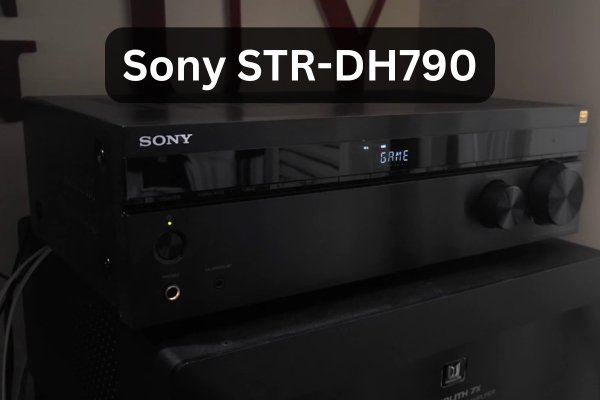
Denon AVR-S760H vs Sony STR-DH790: Audio Performance
Before we dive into their audio quality comparison, take a look at the table below (I’ll explain everything, so don’t worry!):
| Technical Aspect | Denon AVR-S760H | Sony STR-DH790 |
|---|---|---|
| Power Output | 75 watts per channel (8 ohms, 20Hz-20kHz, 0.08% THD, 2 channels driven) | 90 watts per channel (6 ohms, 1kHz, 0.09% THD, 2 channels driven) |
| Impedance Compatibility | 4-16 ohms | 6-16 ohms |
| Signal-to-Noise Ratio (SNR) | 98 dB (IHF-A weighted) | 105 dB (IHF-A weighted) |
| Surround Sound Formats | Dolby Atmos, Dolby TrueHD, DTS, DTS-HD Master Audio, Dolby Surround Upmixer, DTS Neural | Dolby Atmos, Dolby TrueHD, DTS, DTS-HD Master Audio, Dolby Surround, DTS Neural |
Alright, now what does all this jargon mean for you? Let’s get into it.
Power output refers to a receiver’s ability to distribute power to your speakers. As you can see, Denon’s power output is 75 watts per channel, while Sony’s is 90. This means both receivers can seamlessly fill small to medium-sized rooms with sound.
Although Sony’s power is higher on paper, the difference might not be as significant as it seems, because those 90 watts are measured at a lower impedance (we’ll get into that later).
The Denon S760H won’t blow you away with raw power, but its reliability and consistency make it stand out. Even when you crank up the audio, there are no signs of irritating buzzes. On the other hand, the Sony DH790 has the muscle to push your speakers a bit harder, making it a good choice if you prefer your sound on the louder side. Sony’s receiver is particularly adept at handling dynamic shifts in movies, like explosions and dramatic crescendos, without losing its composure.
Impedance compatibility might sound technical, but it simply refers to the range of speakers you can pair with your receiver. This is where Denon’s receiver edges out, as it’s compatible with speakers ranging from 4 to 16 ohms, while the Sony DH790 supports speakers between 6 and 16 ohms. It’s not a huge compliment to our Denon S760H, but if your speakers fall outside Sony’s range, you may run into issues.
The Denon S760H is one of the best receivers for Klipsch speakers. Pairing them can bring a pleasant audio experience to your home theater.
SNR (Signal to Noise Ratio) refers to a receiver’s ability to reduce background noise (the hiss or hum you may hear in the background). In this regard, Sony has the upper hand with its 105 dB SNR, although the difference isn’t that significant.
In terms of supported surround sound formats, both receivers are promising. As you can see in the table, they both support major surround sound formats. However, as you may know, Sony has a reputation for fine-tuning their audio gear, and the Sony STR-DH790 is no exception. In practice, Sony’s receiver was more successful in creating a precise and immersive sound field, clearly beating Denon in this aspect.
So, which Budget receiver provides better sound quality, Denon or Sony?
The competition is close, as you can see, but if you already have external speakers and are sure their impedance matches Sony’s receiver, then the DH790 is the clear winner when it comes to sound quality. It’ll particularly satisfy those who want that extra oomph in their audio.
In the Denon AVR-S760H vs. Sony STR-DH790 comparison, if your external speakers match the DH790’s impedance, it emerges as the premier choice for sound quality, delivering the extra sonic impact that audiophiles crave
Denon AVR-S760H vs Sony STR-DH790: Video Performance
Take a look at this table:
| Video Aspect | Denon AVR-S760H | Sony STR-DH790 |
|---|---|---|
| Resolution Support | 4K/60Hz, 4K/120Hz, 8K/60Hz, HDR10, HDR10+, Dolby Vision, HLG | 4K/60Hz, HDR10, Dolby Vision, HLG |
| Upscaling | Yes, upscales to 4K | No upscaling capabilities |
| Pass-through Support | Yes, supports Dolby Vision, HDR10, HDR10+, HLG; HDMI 2.1 with HDCP 2.3 | Yes, supports Dolby Vision, HDR10, HLG; HDMI 2.0b with HDCP 2.2 |
| Overall Video Performance | Supports 8K, advanced upscaling, future-proof HDMI 2.1 | Limited to 4K, lacks upscaling, older HDMI version |
Alright, as you see, the Denon supports 4K/120Hz and 8K/60Hz. This simply means it supports the highest resolution standard and more! Some may say there’s not a ton of 8K content yet, but just as 4K gradually became the standard, 8K is on the horizon. Additionally, knowing the receiver supports a 120Hz refresh rate means gamers can enjoy a smooth experience without screen tearing and lagging.
On the other hand, while Sony’s receiver does support 4K, it doesn’t support the 120Hz refresh rate or 8K resolution.
Another feature that gives the Denon AVR-S760H the upper hand is its upscaling ability, meaning even if you throw older, lower-resolution content at it, the device can enhance its resolution. The upscaling feature is quite functional and can deliver polished visuals that’ll satisfy you. In contrast, Sony’s receiver doesn’t offer any upscaling, which is another downside for the Sony DH790.
Beyond resolution and upscaling, both receivers are very capable when it comes to high dynamic range (HDR) formats, as they both support HDR10, Dolby Vision, and HLG. However, Denon’s receiver wins the race again since it supports HDR10+, while Sony doesn’t. HDR10+ is a more dynamic and refined format compared to HDR10, providing more vibrant colors.
Which Budget Receiver Wins the Video Performance Battle?
When it comes to video performance, Denon’s receiver definitely beats the Sony STR-DH790. It supports a 120Hz refresh rate for 4K content and 8K at 60Hz, while Sony’s receiver only supports 4K/60Hz. Additionally, the Denon S760H supports HDR10+ and upscaling, making it the better choice in terms of video performance.
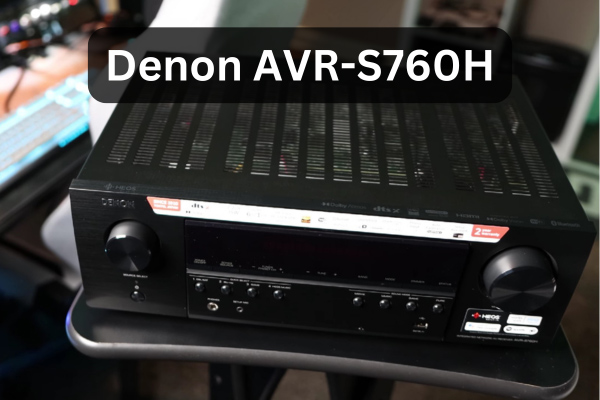
Connectivity Comparison: Denon AVR-S760H vs. Sony STR-DH790
| Connectivity Aspect | Denon AVR-S760H | Sony STR-DH790 |
|---|---|---|
| Wired Connections | 6 HDMI inputs (3 support 8K/60Hz and 4K/120Hz), 1 HDMI output with eARC, 2 optical inputs, 1 coaxial input, multiple RCA inputs, 1 phono input, 1 USB port (music playback), Ethernet port | 4 HDMI inputs (4K/60Hz), 1 HDMI output with ARC, 1 optical input, 1 coaxial input, 4 RCA inputs, no phono input, 1 USB port (power only), no Ethernet port |
| Wireless Connections | Bluetooth (two-way), Wi-Fi, AirPlay 2, no Chromecast support | Bluetooth (AAC codec), no Wi-Fi, no AirPlay, no Chromecast support |
| Network Features | Ethernet port, DLNA support, internet radio, streaming services integration (Spotify, Tidal, Pandora, Amazon Music, Deezer) via HEOS | No Ethernet port, no DLNA support, no internet radio, no built-in streaming services support |
| Overall Connectivity | Advanced wired and wireless connectivity, full network features, HEOS integration | Basic wired and wireless connectivity, lacks network and streaming capabilities |
As you can see in the table above, both receivers support 7.2-channel setups, which is great for a budget receiver. Both devices offer multiple HDMI inputs, but Denon offers two more. Additionally, both devices have one HDMI output, allowing users to connect their display to the receiver. One key difference here is that
Both receivers offer all the expected ports, including RCA, digital audio, and USB. However, the Sony DH790 lacks an Ethernet port, while Denon’s receiver includes one for a wired internet connection.
In terms of wireless connectivity, Sony’s receiver only supports Bluetooth, with no built-in Wi-Fi—this is a real drag. Meanwhile, the S760H comes with built-in Wi-Fi, allowing users to stream content directly from popular services like Spotify, Tidal, Pandora, and Amazon Music (via the HEOS app). The Denon’s support for AirPlay 2 means users can also stream content easily from their iOS devices.
So, Which Budget Receiver Wins the Connectivity Race?
Denon’s device is a clear winner: it has more HDMI inputs, built-in Wi-Fi, and support for AirPlay 2. These are all reasons to consider it the winner in this section.
Features and Functionalities Comparison: Denon AVR-S760H vs. Sony STR-DH790
| Feature/Functionality | Denon AVR-S760H | Sony STR-DH790 |
|---|---|---|
| Calibration | Audyssey MultEQ with setup microphone, Dynamic Volume, Dynamic EQ for advanced calibration tailored to room acoustics | Digital Cinema Auto Calibration (DCAC), basic calibration with speaker level and distance adjustment |
| Zones and Multi-Room Audio | Supports multi-room audio through HEOS system, allowing control of different audio sources in different zones | No multi-zone audio support, limited to single-room audio setup |
| Voice Control | Compatible with Amazon Alexa, Google Assistant, and Apple Siri for voice command control | No voice assistant compatibility, no smart home integration |
| User Interface | User-friendly on-screen display with step-by-step setup instructions, well-designed remote, and HEOS app for comprehensive control | Basic on-screen display, straightforward but limited remote control |
OK, let’s get into the details from the table above.
In terms of audio calibration, Denon is a clear winner. What is calibration, you ask? Well, nothing too complicated—it’s the tech responsible for fine-tuning speaker settings to deliver the best possible audio experience across the entire room. Denon employs Audyssey MultEQ, which is a sophisticated auto-calibration technology. It can really dive deep into your room’s acoustics.
In contrast, Sony’s DH790 uses Digital Cinema Auto Calibration (DCAC), which is more basic. While it does a decent job adjusting speaker levels and distances, it lacks the precision and advanced features that Audyssey brings to the table.
Another area where Denon excels and Sony falls behind is the multi-zone feature. This feature allows you to distribute audio across different rooms. For example, you could listen to music in your room while the kids watch a movie in the living room. Denon lets you stream different content across zones in your home, thanks to its integration with the HEOS app. Unfortunately, the Sony STR-DH790 doesn’t support multi-zone.
If you’re a smart home enthusiast like me, you’ll appreciate the presence of support for voice assistants on an AV receiver. Denon’s contender supports Amazon Alexa, Google Assistant, and Apple Siri. This means you can control your receiver with voice commands—adjusting the volume, switching inputs, or playing your favorite playlist can all be done hands-free. Once again, Sony’s receiver loses the race, as it doesn’t support voice assistants.
When comparing Denon S760H and Sony DH790 in terms of user interface, I noticed how Denon’s interface was intuitive and user-friendly. The setup process included step-by-step instructions, the remote control was very functional, and the HEOS app allowed me to control the device with my smartphone—a nice feature to have.
On the other hand, Sony’s DH790 had a basic on-screen display that wasn’t as intuitive as the S760H’s. The remote control was OK overall, but it couldn’t match Denon’s. Also, there’s no app to control the receiver from a smartphone like with the S760H.
Which Budget Receiver is Superior When it Comes to Features?
The Denon AVR-S760H has more advanced calibration technology, supports multi-zone and voice assistants, and has a better interface, making it the winner without a doubt.
Also Read:
Best Settings for Sony Soundbar
Denon vs Sony: The Moderate Class ($600 – $1500)
To compare Sony vs. Denon in this price range, I’ve chosen these two great models as our contenders:
- Denon AVR-X2800H ($1199)
- Sony STR-AN1000 ($898)
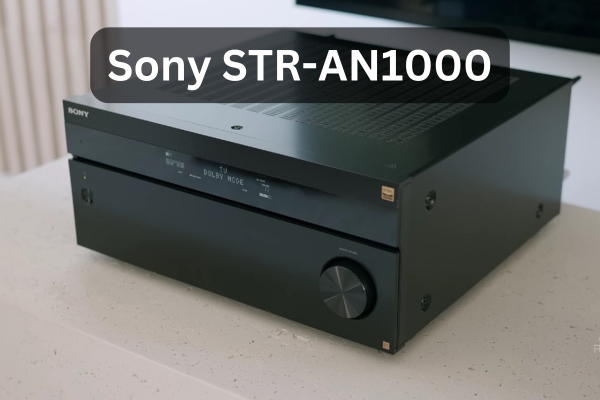
Audio Performance: Denon AVR-X2800H vs. Sony STR-AN1000
| Technical Aspect | Denon AVR-X2800H | Sony STR-AN1000 | Winner |
|---|---|---|---|
| Power Output | 95 watts per channel (8 ohms, 20Hz-20kHz, 0.08% THD, 2 channels driven) | 100 watts per channel (6 ohms, 1kHz, 0.9% THD, 2 channels driven) | Denon AVR-X2800H |
| Impedance Compatibility | 4-16 ohms | 6-16 ohms | Denon AVR-X2800H |
| Signal-to-Noise Ratio (SNR) | 100 dB (IHF-A weighted) | Estimated 105 dB | Sony STR-AN1000 |
| Surround Sound Formats | Dolby Atmos, Dolby TrueHD, DTS, DTS-HD Master Audio, DTS Virtual, Dolby Atmos Height Virtualization | Dolby Atmos, Dolby TrueHD, DTS, DTS-HD Master Audio, DTS Virtual, 360 Reality Audio | Tie |
As you can see in the table, the Denon offers 95 watts per channel with 8-ohm speakers, ensuring distortion-free, consistent sound across various media types. The Denon X2800H is always one of my favorites because its sound is spacious and refined, with a clear emphasis on high-frequency reproduction and a warm, rich tonal quality. However, it might not satisfy users looking for a bass-heavy experience, as the bass is somewhat subdued.
On the other hand, the Sony STR-AN1000 delivers 100 watts per channel at 6 ohms, but with higher distortion. This means it may not perform as consistently across different speaker setups. That said, the Sony is definitely capable of delivering punchy, dynamic sound with deep, impactful bass, making it appealing for those who want extra energy in their audio, like Radiohead fans, perhaps!
In terms of impedance compatibility, the Denon AVR-X2800H supports a wider range of speakers (4 to 16 ohms), while Sony’s range is more limited (6 to 16 ohms). This means Denon’s receiver supports a broader selection of speakers, especially higher-end models, while Sony might restrict your options for speaker setup.
SNR (Signal-to-Noise Ratio) measures how well the receiver reduces background noise. A higher SNR means clearer sound with less interference from unwanted noise. As the table suggests, Sony has the upper hand with its 105 dB SNR, but in real life, the difference between Sony’s 105 dB and Denon’s 100 dB is barely noticeable.
Regarding surround sound, both receivers support all major formats, including Dolby Atmos and DTS-HD Master Audio. However, Sony’s AN1000 introduces 360 Reality Audio, aiming to provide a more immersive experience.
So, Which receiver has Better Audio Performance, Denon X2800H or Sony AN1000?
Each receiver caters to different tastes. If you prefer a balanced sound performance with clear highs, go with the Denon AVR-X2800H. However, if you’re after a more dynamic, punchy sound with deeper bass and an engaging presentation, the Sony STR-AN1000 is your pick.
Video Performance: Denon AVR-X2800H vs. Sony STR-AN1000
| Video Aspect | Denon AVR-X2800H | Sony STR-AN1000 |
|---|---|---|
| Resolution Support | 4K/60Hz, 4K/120Hz, 8K/60Hz (3 HDMI inputs), Dolby Vision, HDR10, HDR10+, HLG | 4K/60Hz, 4K/120Hz, 8K/60Hz (2 HDMI inputs), Dolby Vision, HDR10, HLG |
| Upscaling | Yes, upscales to 8K | No upscaling capabilities |
| Pass-through Support | Yes, supports 8K/60Hz, 4K/120Hz, Dolby Vision, HDR10, HDR10+, HLG | Yes, supports 8K/60Hz, 4K/120Hz, Dolby Vision, HDR10, HLG |
| Overall Video Performance | Broader HDR support, 8K upscaling, more HDMI inputs | Good resolution and HDR support, lacks upscaling |
As the table suggests, in this price range, Sony has tightened the competition by adding extra features compared to its budget models, but it still falls behind Denon’s receiver.
Both devices support the latest resolution standards, including 4K at 120Hz, which is great news for gamers and action-movie fans. They also both support 8K at 60Hz, meaning they’re ready for the next generation of video.
Although both support 4K and 8K, Denon slightly edges out here, as it has three HDMI inputs that support 8K, while Sony has two. It’s a small difference, but worth mentioning for those who need more high-end inputs.
In terms of HDR content, both receivers support key formats like HDR10, Dolby Vision, and HLG. However, Denon has the upper hand with additional support for HDR10+, which is more effective at enhancing color vibrancy in HDR content.
Upscaling is where the Denon AVR-X2800H pulls ahead significantly. It offers 4K and 8K upscaling, meaning it can improve the resolution of older content to match your display’s capabilities. Meanwhile, the Sony STR-AN1000 doesn’t offer any upscaling.
So, Which receiver is Better in Terms of Video Performance, X2800H or AN1000?
Both receivers are well-matched in video performance, but Denon has a slight edge due to its upscaling feature and support for HDR10+.
In the Denon vs Sony moderate class face-off, both receivers shine in video performance, yet Denon gains a subtle advantage with its superior upscaling prowess and HDR10+ compatibility.
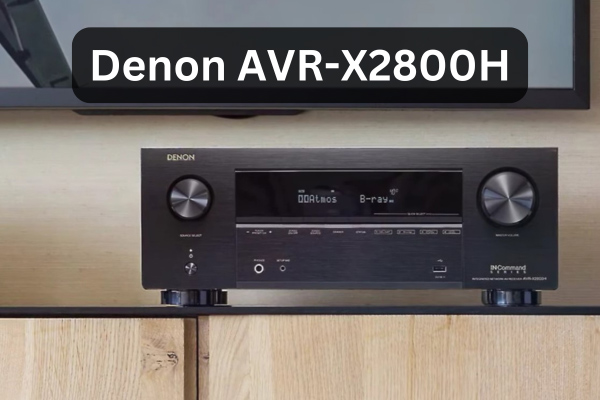
Connectivity Comparison: Denon AVR-X2800H vs. Sony STR-AN1000
| Connectivity Aspect | Denon AVR-X2800H | Sony STR-AN1000 |
|---|---|---|
| Wired Connections | 6 HDMI inputs (3 HDMI 2.1 for 8K/60Hz, 4K/120Hz), 2 HDMI outputs with eARC, 2 optical inputs, 1 coaxial input, multiple RCA inputs, dedicated phono input, 1 USB port (music playback), Ethernet port | 6 HDMI inputs (2 for 8K/60Hz, 4K/120Hz), 2 HDMI outputs with eARC, 1 optical input, 1 coaxial input, 4 RCA inputs, no phono input, 1 USB port (power only), Ethernet port |
| Wireless Connections | Bluetooth with Audio Transmitter, Wi-Fi, AirPlay 2, no native Chromecast support (streams via AirPlay/HEOS) | Bluetooth (AAC codec), Wi-Fi, AirPlay 2, native Chromecast Built-In |
| Network Features | Ethernet port, DLNA support, Internet radio via HEOS, comprehensive streaming service integration (Spotify, Tidal, Deezer, Amazon Music) | Ethernet port, Internet radio via supported streaming services, limited streaming service integration (Spotify Connect, Chromecast, Sonos with additional hardware) |
| Overall Connectivity | More extensive wired connections, versatile wireless features, comprehensive network support with HEOS | Strong wireless features with Chromecast, good connectivity but less extensive than Denon’s options |
According to the table, both receivers offer the same number of HDMI inputs and outputs, though Denon has a slight advantage. As discussed earlier, three of its inputs are HDMI 2.1 compatible, supporting the latest video standards like 8K/60Hz and 4K/120Hz. The Sony AN1000 offers this capability on two inputs.
Both receivers come with expected ports such as optical, coaxial, and RCA inputs, along with an Ethernet port for wired internet. However, Denon edges out here with a dedicated phono input, which is attractive for vinyl enthusiasts. Sony’s receiver lacks this, which could be a deal-breaker for those with a turntable.
In terms of wireless connectivity, both devices offer built-in Wi-Fi, along with Bluetooth and Apple AirPlay 2. This means iOS users can easily stream content from their devices to either receiver. Where the AN1000 gains an advantage is with its additional Chromecast support, making it convenient for those heavily invested in the Google ecosystem to stream from various apps and devices.
Which Receiver Wins in the Connectivity Race?
It depends on your specific needs. If you have many external devices and need more HDMI 2.1 inputs, Denon is the better choice. However, if you’re a Google fan and want the convenience of streaming content from apps and devices, the Sony AN1000 wins with its Chromecast support.
Features and Functionality Comparison: Denon AVR-X2800H vs. Sony STR-AN1000
As you can see in the table, the Sony STR-AN1000 is equipped with Digital Cinema Auto Calibration IX (DCAC IX), which is an improvement over the Sony budget receiver we discussed earlier. However, it still can’t match the Audyssey MultEQ XT calibration tech built into the Denon AVR-X2800H. Audyssey adjusts sound settings more accurately and offers better customization through the Audyssey MultEQ Editor app. On the other hand, while Sony’s DCAC IX does a decent job adjusting speaker levels and distances, it lacks the depth and precision of Audyssey.
When comparing the multi-zone features between these two models, things get a bit controversial, as each has its strengths. Denon supports up to 2 zones for both wired and wireless setups, meaning you can seamlessly distribute audio sources across two zones, whether you have a wired or wireless system. Plus, Denon’s integration with the HEOS app allows easy control of audio throughout your home, with the flexibility to expand to more wireless zones via HEOS-enabled devices.
On the other hand, Sony makes the competition tougher with its support for up to 3 zones. Zones 1 and 2 can handle UHD video, while Zone 3 supports only audio playback. While this is a clear advantage over Denon’s receiver, here’s the snag: Sony’s receiver primarily supports wireless multi-room setups through compatible Sony speakers or additional hardware for Sonos integration. It doesn’t offer the same native wired zone support as Denon.
Voice control is another area where Denon’s receiver shines. The X2800H supports all major voice assistants: Amazon Alexa, Google Assistant, and Siri. So, if you’re a smart home owner, no matter which ecosystem you’re invested in, Denon has you covered. In contrast, Sony’s AN1000, while supporting Google Assistant, doesn’t support Alexa or Siri, which could be a drawback for Alexa and Apple users.
The Denon AVR-X2800H outshines the Sony STR-AN1000 when it comes to the user interface. It has an intuitive and clear on-screen display, and its remote control is easy to use, with logical button placement. Plus, the HEOS app offers comprehensive control, allowing users to manage their device via smartphone or tablet.
Sony’s interface is functional, but it feels a bit dated and less refined. The black-and-white text on the on-screen display is basic, and the remote control isn’t particularly user-friendly, with small buttons that are difficult to work with.
Which One Provides Better Features in the Midrange Class: Denon or Sony?
Denon’s on-screen display and remote are more intuitive, it supports all voice assistants, and it provides superior calibration technology, so I consider Denon the winner. However, the fact that Sony’s receiver supports 3 zones may be a significant advantage for some users. Although it’s limited to wireless setups, I’ll leave the choice up to you.
Denon vs Sony: The Premium Class (Above $1500)
Now, it’s finally time to review the best models that each brand brings to the ring! Here are the best AV receivers offered by Denon and Sony:
- Denon AVR-X4800H ($2,499)
- Sony STR-AZ5000ES ($2,098)
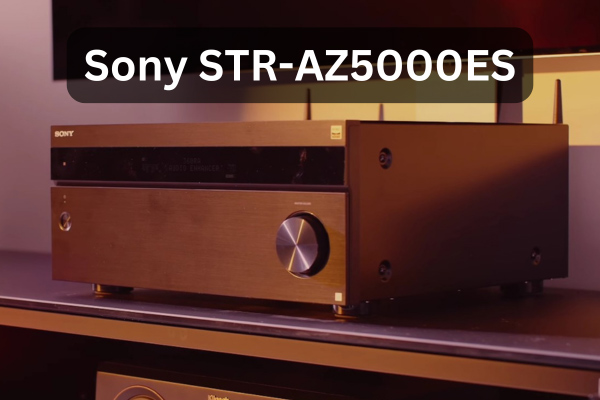
Denon AVR-X4800H vs. Sony STR-AZ5000ES: Audio Performance
Take a look at this table first:
| Technical Aspect | Denon AVR-X4800H | Sony STR-ZA5000ES | Winner |
|---|---|---|---|
| Power Output | 125 watts per channel (8 ohms, 20Hz-20kHz, 0.05% THD, 2 channels driven) | 130 watts per channel (8 ohms, 1 kHz, 0.9% THD, 2 channels driven) | Denon AVR-X4800H |
| Impedance Compatibility | 4-16 ohms | 4-16 ohms | Tie |
| Signal-to-Noise Ratio (SNR) | 110.5 dB (IHF-A weighted) | 105 dB (IHF-A weighted) | Denon AVR-X4800H |
| Surround Sound Formats | Dolby Atmos, DTS, IMAX Enhanced, Auro-3D, Dolby TrueHD, DTS-HD Master Audio, DTS Virtual | Dolby Atmos, DTS, Dolby TrueHD, DTS-HD Master Audio | Denon AVR-X4800H |
OK, what does this technical stuff mean to you? Let’s start with the power output; it simply determines how loud and clean your sound can get, especially during those intense movie moments or when playing your favorite track.
As you see, Denon’s receiver provides 125 watts per channel. While this doesn’t feel like a huge difference compared to Sony’s 120 WPC power output, in practice, Denon’s power tends to feel more robust.
While Denon offers 9.4 channel support, which means it can easily handle a full surround sound setup, Sony has the upper hand here since it offers a bit more when it comes to channel support with its 11.2 channels.
While Sony’s receiver supports more channels, it has a lower power output (120 watts per channel) compared to Denon’s 125 WPC. Now, this 5-watt difference may not seem like a big deal, but when I tested both models, while both did an excellent job handling a variety of content, it appeared that Sony’s receiver doesn’t have the same headroom as the Denon at higher volumes, especially during explosive movie moments.
Impedance compatibility determines the range of speakers the receiver is compatible with. Both devices are compatible with 4–16 ohms speakers; therefore, it’s a tie in this area.
Both receivers offer all the big names when it comes to surround sound formats. Both support Dolby Atmos and DTS. Plus, they both offer IMAX Enhanced certification. However, they do have their differences.
Denon offers Auro-3D, which adds an extra level of 3D depth, especially in height channels. Denon’s receiver is truly capable of delivering an immersive 3D experience. Watching the movie “Gravity” with the Denon was mind-blowing; I could hear every whisper of sound.
On the other hand, Sony sets itself apart with its proprietary 360 Spatial Sound Mapping technology, which really is something. While it doesn’t support Auro-3D, its 360 Reality Audio really makes it shine. Sony’s 360-degree surround sound does a great job of positioning sound in a 3D space, particularly when listening to music or playing games.
So, Which Premium Receiver Provides Better Sound Quality?
While Sony did a great job, especially in terms of providing an immersive 3D experience, I still prefer the Denon since it performed slightly better at louder volumes; it could really drive my speakers without a fuss.
Denon AVR-X4800H vs. Sony STR-AZ5000ES: Video Performance
| Video Aspect | Denon AVR-X4800H | Sony STR-ZA5000ES |
|---|---|---|
| Resolution Support | 4K/120Hz, 8K/60Hz (3 HDMI inputs), Dolby Vision, HDR10, HDR10+, HLG | 4K/60Hz, Dolby Vision, HDR10 |
| Upscaling | Yes, upscales to 8K | No upscaling capabilities |
| Pass-through Support | Yes, supports 8K/60Hz, 4K/120Hz, Dolby Vision, HDR10, HDR10+, HLG | Yes, supports 4K/60Hz, Dolby Vision, HDR10, no 8K support |
| Overall Video Performance | Advanced resolution support, 8K upscaling, broader HDR compatibility | Limited to 4K/60Hz, lacks 8K support and upscaling |
Just like our moderately priced contenders, these two models are closely matched in terms of video performance. Thanks to their HDMI 2.1 pass-through, they both support 4K resolution at 120Hz, which means they provide a smooth visual experience with great resolution, and they also support 8K at 60Hz to help you future-proof your setup.
HDR content is supported on both devices thanks to the inclusion of HDR10, Dolby Vision, and HLG, but Sony’s receiver lacks HDR10+ compatibility while the Denon does offer this format. As I’ve mentioned before, HDR10+ is a much more capable format compared to HDR10. This is pretty evident if you watch highly detailed content like “Planet Earth II,” as colors are much more vibrant.
When it comes to upscaling, both receivers claim they can upscale older content to 4K or 8K, depending on the compatibility of your display device. However, in practice, when testing both devices with an old DVD of “The Matrix,” with the Denon, the difference was like night and day. With Sony’s receiver, while it truly gave the movie a significant bump in quality, the visuals couldn’t achieve the same level of detail as the Denon.
So, Which One Has Better Video Performance, Sony or Denon?
It’s clear that Denon’s X4800H does a better job since it offers HDR10+ and performs better at upscaling older content.
When contrasting the premium models from Denon vs. Sony in terms of video performance, Denon’s receiver outperforms with its superior HDR10+ support and enhanced upscaling capabilities.
Denon AVC-X4800H vs. Sony STR-AZ5000ES: Connectivity
| Connectivity Aspect | Denon AVR-X4800H | Sony STR-ZA5000ES |
|---|---|---|
| Wired Connections | 7 HDMI inputs (3 HDMI 2.1 for 8K/60Hz, 4K/120Hz), 3 HDMI outputs with eARC, 2 optical inputs, 2 coaxial inputs, multiple RCA inputs, dedicated phono input, 1 USB port (music playback) | 6 HDMI inputs (4K/60Hz, HDCP 2.2), 2 HDMI outputs with eARC, 2 optical inputs, 1 coaxial input, multiple RCA inputs, no phono input, 1 USB port (firmware updates only) |
| Wireless Connections | Bluetooth with Audio Transmitter, Wi-Fi, AirPlay 2, no native Chromecast support (streaming via HEOS) | Bluetooth, Wi-Fi, AirPlay 2, native Chromecast Built-In |
| Network Features | Ethernet port, DLNA support, Internet radio via HEOS, comprehensive streaming service integration (Spotify, Tidal, Amazon Music, Deezer, etc.) | Ethernet port, DLNA support, Internet radio, streaming services via Chromecast (Spotify, Pandora, Tidal, etc.) |
| Overall Connectivity | More HDMI inputs/outputs, phono input, advanced Bluetooth features, extensive HEOS streaming services | Native Chromecast support, strong overall wireless connectivity but lacks phono input and has fewer HDMI options |
In terms of wired connections, neither device disappoints. Denon offers 7 HDMI inputs, including one on the front for easy access, along with 3 HDMI outputs. Sony provides the same number of HDMI inputs but has 2 HDMI outputs. Plus, they both offer the usual ports you’d expect from an AV receiver, including optical, coaxial, Ethernet, and RCA. However, the Denon adds a phono input, which is good news for vinyl lovers.
Both devices offer Bluetooth and Wi-Fi for wireless audio streaming. They also support Apple AirPlay 2 and Chromecast to satisfy both Apple and Android users in terms of streaming content from compatible devices to their receiver. However, there’s a slight difference here: Sony has Bluetooth 5.0, which supports longer distances compared to Denon’s Bluetooth 4.2. But this won’t matter unless you’re streaming from a long distance.
If you’re planning to stream content from popular platforms like Spotify, Pandora, or Tidal, rest assured that both models are thoroughly compatible with these platforms.
So, Which One’s the Winner in the Connectivity Category?
There’s obviously no winner or loser here, as they’re both robust devices with great connectivity features. So, I declare a tie!
Denon AVC-X4800H vs. Sony STR-AZ5000ES: Features and Functionalities
| Feature/Functionality | Denon AVR-X4800H | Sony STR-ZA5000ES |
|---|---|---|
| Calibration | Audyssey MultEQ XT32, highly customizable with precise adjustments via the Audyssey MultEQ Editor app | Digital Cinema Auto Calibration EX (DCAC EX), basic calibration with stereo microphones, less customization |
| Zones and Multi-Room Audio | Supports up to 3 zones with HEOS multi-room system for seamless wireless audio control via HEOS app | Supports up to 3 zones, basic multi-zone audio capabilities, lacks advanced wireless features like HEOS |
| Voice Control | Compatible with Amazon Alexa, Google Assistant, and Apple Siri for broad voice control options | Compatible with Google Assistant and Amazon Alexa, but no Apple Siri support |
| User Interface | Modern, user-friendly on-screen display, well-designed remote, and extensive control via the HEOS app | Functional but dated on-screen display, straightforward remote, lacks a dedicated app for advanced control |
If you’re into AV receivers, seeing Dirac Live as the calibration tech under Denon’s name probably makes you excited. Dirac Live is sophisticated and robust calibration technology found in higher-end receivers. However, on this Denon receiver, the main calibration is provided by Audyssey MultEQ XT32, which is also good at creating the perfect audio profile according to the acoustics at multiple points. To have Dirac Live, you must upgrade the device.
On the other hand, Sony’s auto-calibration system is Digital Cinema Auto Calibration (DCAC IX), which is also great but not as advanced as Audyssey. It comes with a unique feature called 360 Spatial Sound Mapping, which, as we already discussed, is impactful in creating an immersive 3D experience. However, Denon’s Audyssey is more precise in general, as it can adjust audio settings more accurately according to my tests.
In terms of the multi-zone feature, both receivers support up to 3 zones. This feature allows users to use different content in separate rooms of your home. For example, you can listen to music in your bedroom while a movie plays in the living room. However, the HEOS app on Denon’s receiver is a huge complement, as it provides a better user experience with streamlined control over the zones, while Sony’s approach appears less intuitive.
For voice control, the Denon supports Alexa, Siri, and Google Assistant, while Sony only offers Google Assistant—another drawback for the Sony STR-AZ5000ES.
So, Which Receiver Provides Better Features?
While the competition is very tight, Denon’s the better receiver since it offers Dirac Live for calibration, which is the best technology for sound adjustment. Plus, it covers all major voice assistants and provides a more streamlined multi-zone control thanks to the HEOS app.
Conclusion
In this article, I tried to thoroughly compare Denon vs Sony to give you an idea of the brand that better suits you according to your home theater setup and taste of sound. As you see, Denon offers a better value for money, plus it’s been an old player in the AV receiver game, offering great reliability for so long. So, it’s best to go with a receiver made by Denon.
